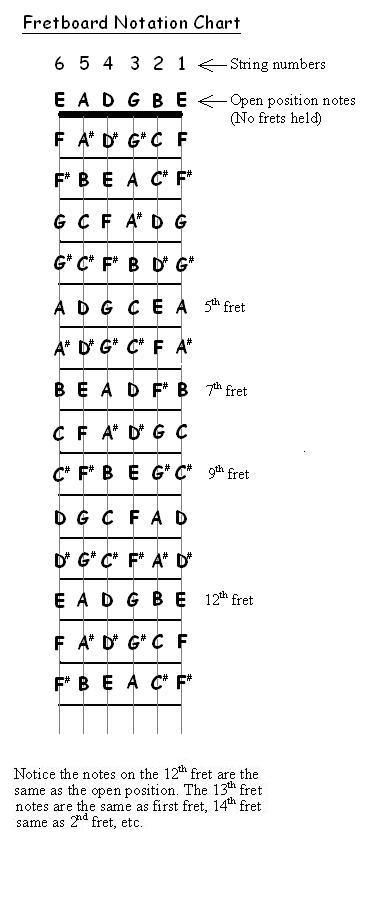I don't know how many times I have you looked at guitar chord charts and wondered how the chords were constructed in the first place. I know chords are important to the guitar but what exactly are they and more importantly why do some work and some don't?
When you first start learning the guitar, pretty much one of the first things you learn to play are the basic major guitar chords, such as C-major, G-major, etc, and you learn to read guitar chord diagrams like this one which shows the C-major chord:
It became very clear early on that knowing about chords and how chords are constructed is quite useful. Perhaps the most important thing about chord construction is that it will help you find chord shapes anywhere on the fretboard. Also, if you want to play lead guitar,having some understanding of how chords are built from scales will let you create much better sounding solos. Guitar chords, or just any chords in music are created by choosing certain notes from a particular scale. Here, we’re going to look at chords created from the major scale.
Here are the notes & guitar tab for the C-major guitar scale:
The colored numbers in the middle are important. These are known the scale degrees, which are the note’s number within the scale. The notes marked in blue are the root notes of the scale, since this is the C-major scale, the root note is the note ‘C’ (3rd fret, 5th string on the fretboard). The notes marked in yellow are the other (non-root) notes of the scale.
To build a basic major chord, take the 1st, 3rd and 5th notes from the major scale, and play them together at the same time. Here is the same diagram as above, but now the notes that will form the C-major chord are highlighted:
The basic major chord consists only of these scale notes 1, 3, 5, and none of the others. If we play these 3 notes together, we get the basic C-major chord, also known as the C-major triad:
If you play all the scale notes on your guitar, then only the 1, 3, 5 notes shown, you will get an idea of the sound of the basic major chord.These 3 notes form the bottom part of the C-major chord in the chord chart shown above. To get the other 2 notes, we just repeat the scale notes 1 & 3 (notes C and E), and stack these on top, to get the full C-major chord:
All basic major chords consist only of these 3 scale degrees, 1 (root), 3 and 5 taken from the major scale.
To apply this for a different chord, you would start off with the major scale (e.g. the G-major scale), and take notes 1, 3 & 5 from it.
Question: How can this help when playing lead guitar?
Answer: If the rhythm chords are C-major followed by F-major, and you’re playing a solo over these. As we’ve seen from above, the notes in the C-major chord are C, E, G. While the rhythm is playing the C-major chord, then lead licks and phrases that start or end on one of these notes, will overall, tend to sound a better ‘fit’ with this chord than other notes from the C-major scale.When the rhythm changes to the F-major chord, the notes in this chord are the 1, 3 & 5 scale degrees of the F-major scale, which are the notes F, A & C. You would change your licks & phrases to start or end on these notes while the rhythm is playing this chord.
















